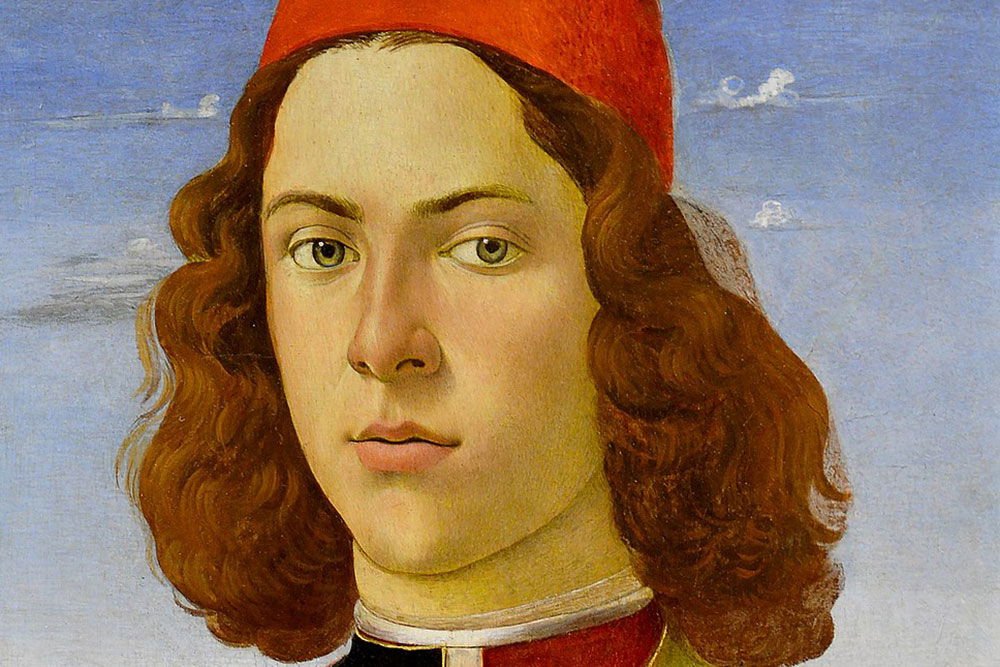
Sandro Botticelli, born Alessandro di Mariano di Vanni Filipepi around 1445 in Florence, remains one of the most revered painters of the Italian Renaissance. Celebrated for his lyrical style, mythological masterpieces, and profound religious imagery, Botticelli's work captures the elegance, emotion, and philosophical complexity of the era. Best known for The Birth of Venus and Primavera, his paintings continue to enchant viewers over 500 years later.
Botticelli was born in Florence at a time when the city was a flourishing center of art, commerce, and intellectual innovation. His family was relatively modest; his father was a tanner. The nickname Botticelli, meaning "little barrel," originally belonged to his brother but was eventually passed on to Sandro.
He began his artistic training under Fra Filippo Lippi, one of the most admired painters of the day. Under Lippi, Botticelli learned delicate line work, expressive faces, and the ability to blend grace with emotional depth, hallmarks of his mature style.
Botticelli's talent brought him into the sphere of Florence's most powerful family: the Medici. As a court artist, he produced works for Lorenzo de' Medici, also known as Lorenzo the Magnificent. The Medici were great patrons of the arts and fostered a unique blend of Neoplatonic philosophy and Christian humanism, which deeply influenced Botticelli’s themes.
Two of Botticelli’s most iconic works are the mythologically inspired Primavera (c. 1482) and The Birth of Venus (c. 1485–1486), both likely commissioned by the Medici family.
Primavera is a complex allegory of spring, fertility, and love, featuring figures from Roman mythology such as Venus, Mercury, and the Three Graces. The painting weaves together multiple symbolic threads, astrological, botanical, literary, to create a visual poem of rebirth and harmony.
 The Birth of Venus
The Birth of VenusThe Birth of Venus depicts the goddess Venus emerging from the sea on a shell, a composition that has become an icon of Western art. Inspired by classical antiquity and Neoplatonic ideals of divine love, the painting embodies grace, proportion, and ethereal beauty.
These works marked a significant departure from the religious themes dominant in Renaissance art, showcasing Botticelli’s ability to reinterpret ancient myths with a uniquely poetic sensibility.
Later in life, Botticelli’s style shifted dramatically under the influence of the Dominican friar Girolamo Savonarola, who preached against secularism and the excesses of Florentine society. Botticelli, affected by this fiery religiosity, began producing more austere religious imagery, such as The Mystical Nativity (c. 1500), a haunting and symbol-laden depiction of Christ’s birth that reflects spiritual anxiety and eschatological themes.
 The Mystical Nativity
The Mystical NativityThere is speculation that Botticelli may have destroyed some of his earlier mythological paintings in response to Savonarola’s teachings, though this remains unproven.
Botticelli's style is characterized by:
Elegant linearity: He used flowing contours to define figures and drapery, contributing to a sense of graceful movement.
Expressive emotion: His characters often display inward-looking expressions, imbuing scenes with psychological depth.
Symbolism: Many of his works are rich in allegorical and philosophical meaning.
Delicate color palette: His use of light pastels and golds contributes to the dreamlike quality of his compositions.
Unlike other Renaissance artists such as Leonardo da Vinci or Michelangelo, Botticelli was less concerned with anatomical realism and more focused on decorative harmony and narrative clarity.
By the early 1500s, tastes had changed. The rising dominance of High Renaissance naturalism made Botticelli's more stylized work seem outdated. He died in relative obscurity in 1510, buried in the Ognissanti Church in Florence.
However, Botticelli's reputation was revived in the 19th century by the Pre-Raphaelite Brotherhood and art historians who admired his poetic vision and intricate compositions. Today, he is celebrated as a master of elegance and one of the defining painters of the Early Renaissance.
Botticelli’s art endures because it touches on universal themes: beauty, love, transformation, and the divine. His blend of classical mythology with Christian mysticism, coupled with his expressive use of line and form, influenced generations of artists and continues to captivate audiences today.
Major museums around the world, including the Uffizi Gallery in Florence and the National Gallery in London, proudly display his works. His images, especially The Birth of Venus, have become global icons, frequently referenced in fashion, film, and pop culture.
Sandro Botticelli was not just a painter but a visual poet of the Renaissance, crafting worlds where the sacred and the sensual dance in harmony. His works are timeless testaments to the enduring power of art to elevate, inspire, and transcend. Through the ages, Botticelli reminds us that beauty is not merely to be seen, but to be felt.

More Details